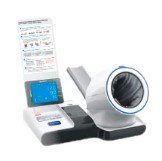Ensuring Proper Temperature Control During Transportation of Biological Samples in the United States
Summary
- Proper temperature control is crucial during the transportation of biological samples to ensure accurate Test Results and patient safety.
- Phlebotomists can ensure proper temperature control by using appropriate packaging, monitoring temperature regularly, and following transportation guidelines.
- In the United States, regulatory bodies like CLSI and CDC provide guidelines for temperature control during sample transportation.
Introduction
Phlebotomy is an essential part of the healthcare system, as it involves the collection of blood and other biological samples for diagnostic testing. Once these samples are collected, they need to be transported to the medical laboratory for analysis. Proper temperature control during the transportation of biological samples is crucial to ensure the accuracy of Test Results and patient safety. In this article, we will discuss how phlebotomists can ensure proper temperature control during the transportation of biological samples in the United States.
Importance of Proper Temperature Control
Proper temperature control is essential during the transportation of biological samples for several reasons:
- Temperature fluctuations can alter the composition of the samples, leading to inaccurate Test Results.
- Some samples, such as those for Genetic Testing or viral load measurements, are temperature-sensitive and may degrade if not stored at the right temperature.
- Improper temperature control can compromise the integrity of the samples, potentially leading to misdiagnosis and inappropriate treatment decisions.
Guidelines for Temperature Control
In the United States, regulatory bodies like the Clinical and Laboratory Standards Institute (CLSI) and the Centers for Disease Control and Prevention (CDC) provide guidelines for temperature control during the transportation of biological samples. Phlebotomists should familiarize themselves with these guidelines and ensure compliance to maintain Sample Integrity and quality.
CLSI Guidelines
The CLSI guidelines provide recommendations for the proper handling and transportation of biological samples to maintain their integrity. These guidelines include:
- Using appropriate packaging materials, such as insulated containers or cold packs, to maintain the temperature of the samples.
- Monitoring the temperature of the samples during transportation and ensuring that it stays within the recommended range.
- Training staff on proper Sample Handling techniques to prevent temperature fluctuations.
CDC Guidelines
The CDC guidelines also emphasize the importance of temperature control during the transportation of biological samples. These guidelines include:
- Using temperature monitoring devices, such as data loggers, to track the temperature of samples throughout the transportation process.
- Implementing procedures for handling temperature excursions, such as documenting the incident and evaluating the potential impact on Sample Integrity.
- Following specific temperature requirements for different types of samples, such as refrigerated or frozen samples.
Best Practices for Phlebotomists
To ensure proper temperature control during the transportation of biological samples, phlebotomists can follow these best practices:
- Use insulated containers or cold packs to maintain the temperature of the samples during transportation.
- Monitor the temperature of the samples regularly and document any deviations from the recommended range.
- Follow transportation guidelines provided by regulatory bodies like CLSI and CDC to ensure Sample Integrity.
- Train staff on proper Sample Handling techniques to prevent temperature fluctuations and ensure sample quality.
Conclusion
Proper temperature control during the transportation of biological samples is crucial to ensure the accuracy of Test Results and patient safety. Phlebotomists can ensure proper temperature control by using appropriate packaging, monitoring temperature regularly, and following transportation guidelines provided by regulatory bodies like CLSI and CDC. By following best practices for temperature control, phlebotomists can maintain Sample Integrity and quality, ultimately improving patient care in the United States.

Disclaimer: The content provided on this blog is for informational purposes only, reflecting the personal opinions and insights of the author(s) on the topics. The information provided should not be used for diagnosing or treating a health problem or disease, and those seeking personal medical advice should consult with a licensed physician. Always seek the advice of your doctor or other qualified health provider regarding a medical condition. Never disregard professional medical advice or delay in seeking it because of something you have read on this website. If you think you may have a medical emergency, call 911 or go to the nearest emergency room immediately. No physician-patient relationship is created by this web site or its use. No contributors to this web site make any representations, express or implied, with respect to the information provided herein or to its use. While we strive to share accurate and up-to-date information, we cannot guarantee the completeness, reliability, or accuracy of the content. The blog may also include links to external websites and resources for the convenience of our readers. Please note that linking to other sites does not imply endorsement of their content, practices, or services by us. Readers should use their discretion and judgment while exploring any external links and resources mentioned on this blog.
